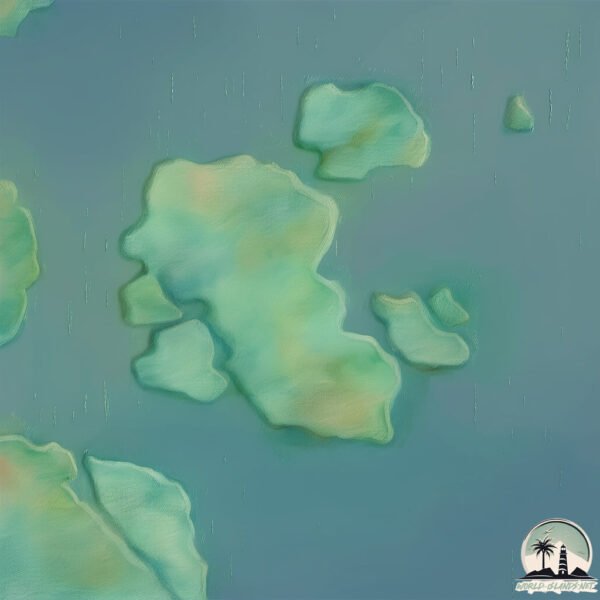Welcome to Tangbac , a Temperate island in the South Pacific Ocean, part of the majestic Pacific Ocean. This guide offers a comprehensive overview of what makes Tangbac unique – from its geography and climate to its population, infrastructure, and beyond. Dive into the details:
Geography and size of Tangbac
Size: 24.7 km²Coastline: 45 kmOcean: Pacific OceanSea: South Pacific OceanContinent: South America
Tangbac is a Medium Island spanning 25 km² with a coastline of 45 km.
Archipel: –
Tectonic Plate: South America – A major plate covering the South American continent and part of the Atlantic Ocean, known for the Andes mountain range and significant seismic and volcanic activity.
The geographic heart of the island is pinpointed at these coordinates:
Climate and weather of Tangbac
Climate Zone: TemperateClimate Details: Temperate Oceanic ClimateTemperature: Warm Summer
Climate Characteristics: Known for its moderate year-round temperatures with ample rainfall and no dry season. Warm summers are characteristic.
Topography and nature of Tangbac
Timezone: UTC-04:00Timezone places: America/La_PazMax. Elevation: 309 m Mean Elevation: 102 mVegetation: Evergreen Broadleaf ForestTree Coverage: 92%
The mean elevation is 102 m. The highest elevation on the island reaches approximately 309 meters above sea level. The island is characterized by Hills: Gently sloping landforms with rounded tops, having a maximum elevation between 200 and 500 meters. Hills contribute to a varied landscape on islands.
Dominating Vegetation: Evergreen Broadleaf Forest
Vegetation: 4 vegetation zones – Diverse Island
Infrastructure and Travelling to Tangbac
Does the island have a public airport? no .
Does the island have a major port? no .
The mean population of Tangbac is 1 per km². Tangbac is Gently Populated. The island belongs to Chile .
Continuing your journey, Teresa is the next notable island, situated merely km away.
P9- Nhà hàng Horn @Rhode Island - qua dự đám tang bac sui gái- ngày 1/5/2021
P10- Qua Rhode Island dự đám tang bac sui gái- ngày 1/5/2021
P11- Qua Rhode Island dự đám tang bac sui gái- ngày 1/5/2021
Chile is classified as Emerging region: G20: Group of Twenty – Major economies comprising both developed and emerging countries, representing the world’s largest economies. The level of income is Upper middle income.
News – Latest Updates and Headlines from Tangbac
Stay informed with the most recent news and important headlines from Tangbac. Here’s a roundup of the latest developments.
Loading...
Please note: The data used here has been primarily extracted from satellite readings. Deviations from exact values may occur, particularly regarding the height of elevations and population density. Land area and coastline measurements refer to average values at mean high tide.

